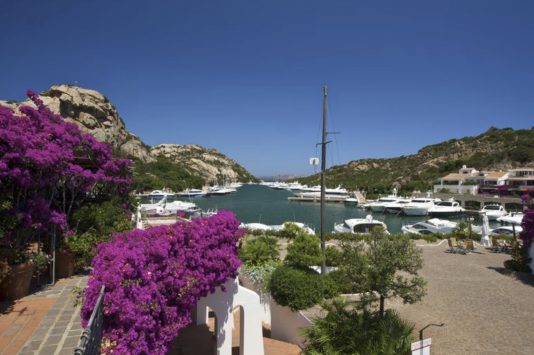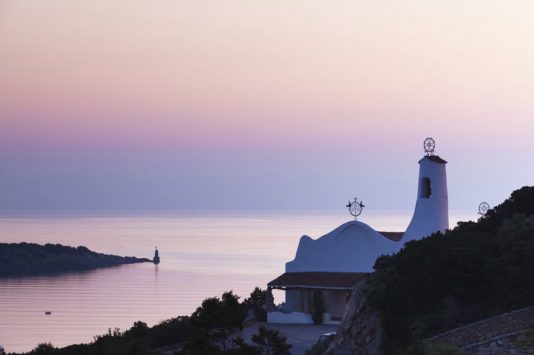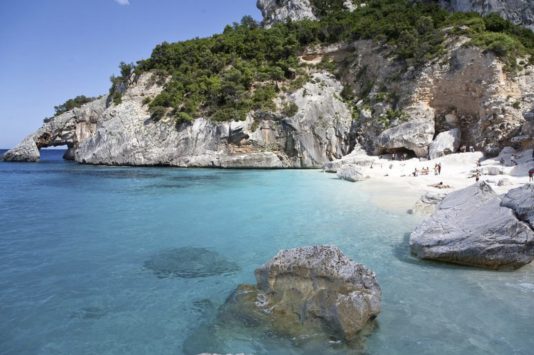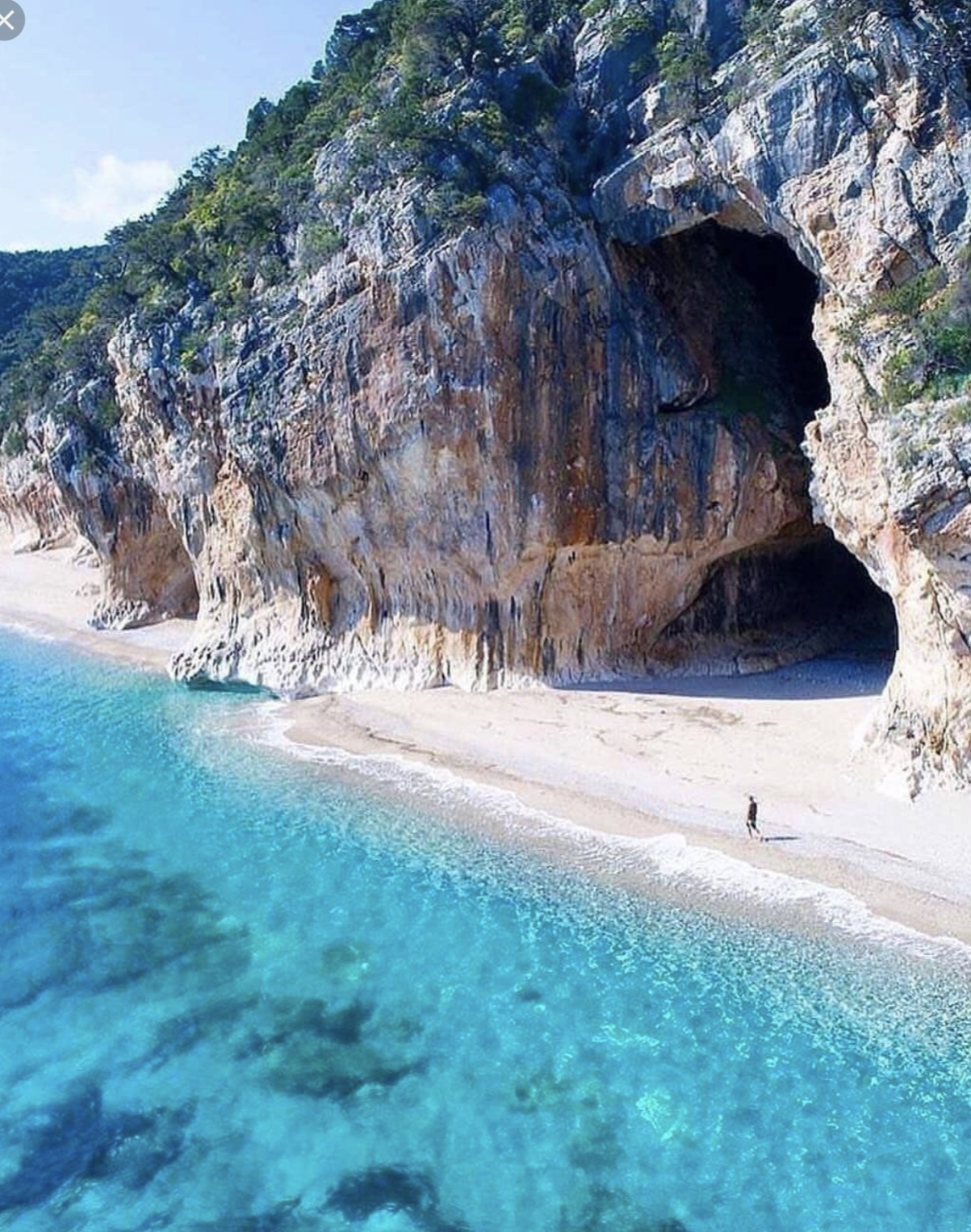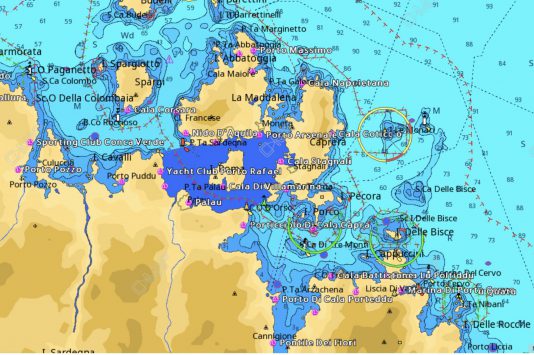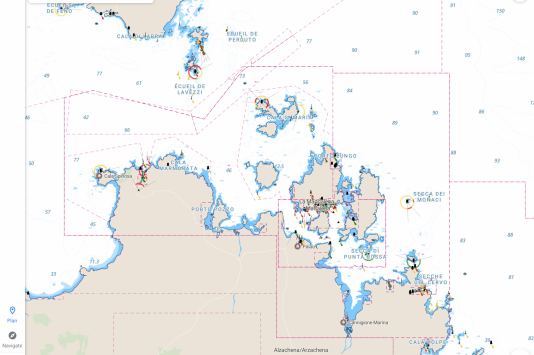West Med
Sardinia and Corsica

The Costa Smeralda, Sardinia and Italy’s most famous coastline, is just a few kilometers long. A fashionable and upmarket resort with a harbor lined with luxury yachts, cafés where the party never stops, secluded sunny beaches, crystal clear waters, granite rocky outcrops sculpted by the wind, and unspoilt nature.
It took a very young Muslim prince to transform a few kilometers of the north-eastern coast of Sardinia into what has now become the most sought-after destination for the well-to-do, but which over time has also become accessible to everyone… or to almost everyone. Karim Aga Khan was a visionary, and this is an undisputed fact. Fifty years ago, he recognized the endless potential of a barren and as yet uninhabited stretch of coastline. Beautiful beaches, bays pervaded by the sweet scent of juniper, crystalline waters, pink granite and outstanding views. It was the perfect getaway for prominent figures like himself (i.e., Grace Kelly, Greta Garbo, Princess Margaret, Gianni Agnelli, Jacqueline Kennedy, Juan Carlos). VIPs looking for refinement, privacy and a secluded place to hold events and private parties reserved for the select few. With his head for Costa Smeralda: the history and development of a legend
In 1962, the 26-year-old multilingual Ismaili prince Karim Aga Khan, with a degree from Harvard in one hand and a 20-year-old baroness holding the other, armed with a fat wallet, founded a consortium to purchase a stretch of unspoilt coastline in the north-east of Sardinia, reachable in a couple of hours landing in Alghero. The investors, all wealthy and cosmopolitan foreigners (the French lawyer André Ardoin, the beer tycoon Patrick Guinness, the banker John Duncan Miller, and René Podbielski, the exuberant writer from Central Europe, as well as Felix Bigio, Aga Khan’s private secretary), paid good money for a little piece of paradise. The Costa Smeralda was the jewel in the crown of Architect Luigi Vietti, who designed the resort of Porto Cervo. Here’s how it all began. The jet-set of the time was adventurous and keen on exploring. The young and wealthy of the 1960s were the radical chic generation. Economy was thriving everywhere and the island of Sardinia was a huge gamble. Today, things have changed somewhat. All that remains of that golden age are the black and white photographs. Simple and legendary boats like the Dutch Stormvogel and the Tamory have been replaced by 100 m yachts moored in the marinas. Aristocratic entrepreneurs have all but disappeared, replaced by wealthy Russians, Arabian magnates and other investors from the east. The glamour of the beaches and upmarket resorts have attracted world famous actors and singers, as well as other modern day celebrities like footballers, supermodels and influencers.
But all is not lost. Despite the development of the area (this short stretch of coastline is blanketed with hotels, resorts and villages that merge into their natural surroundings), the Costa Smeralda has remained exclusive and beautiful, and still evokes an image of luxury, relaxation and crystal clear waters. Nature is all around and the bays are a reflection of a tropical paradise. A strip of small gulfs and intimate and secluded beaches that can only be reached by paths, which are semi-concealed by the scrub. This stretch of coastline boasts a plethora of fabulous beaches. But let’s go in order. Porto Cervo and Porto Rotondo are the two small hubs of the Costa Smeralda. Porto Cervo is undoubtedly the more prestigious of the two. Set in a bay sheltered from the wind, it boasts an iconic square, elegant and expensive boutiques, cafés and nightclubs, golf courses and a marina large enough to accommodate 700 boats. Nothing is ordinary here. The architecture is a mish-mash of styles, while the sea views are simply breathtaking, offset by natural granite outcrops that have been shaped by the wind. Porto Rotondo is a smaller version of Porto Cervo, with villas and stately homes enclosing the small central square, a myriad of boutiques for fashion addicts and a smaller but no less elegant marina full of luxury yachts. Between the two ports, the idyllic sandy shores with their fine, white sand are lapped by crystal clear, shallow waters. For those who are not interested in VIP-spotting, the Costa Smeralda is also a hotspot for sailing, scuba diving, snorkeling and windsurfing. The Gulf of Marinella with its extensive sandy shore is located to the east of Porto Rotondo. A local legend says that the sand is so white that it can illuminate even the darkest of nights. Further down the coast you reach Punta della Volpe, where the sand is interspersed with pebbles. The Spiaggia di Ira beach, framed by a small cliff, can be found just west of the marina in the curved bay of Cala La Tazza. Proceeding further north, you come to the Rena Bianca beach, the wide and isolated Razza di Junco bay, the rugged Petra Rujia, with two tiny sandy bays and a multitude of rocky outcrops, Liscia Ruja and Li Triceddi, with tiny pebbles that enhance the white sand with a pink hue. The pebble beach La Celvia, before the extraordinary Caprìccioli, is framed by a curtain of small islands (Mortorio, Le Camere, Soffi). Just a stone’s throw from the secluded beach of Porto Nibani we find Principe beach and the wider Piccolo and Grande Pevero beaches. After windswept Capo Ferro, topped by a lighthouse and with the island of Bisce in the distance, you turn left towards Liscia di Vacca, with the Cappuccini Island right in front of you. Resembling Porto Cervo and Porto Rotondo, Baia Sardinia is another popular tourist resort in summer. Hence our beautiful tour of the Costa Smeralda draws to a close. Time may have changed things but this is still the Costa Smeralda, the Mediterranean’s most famous coastline. A must for a fascinating and highly seductive holiday. And you’ve still got the whole island and the Gallura region to explore, a low-key alternative to the glitzy Costa Smeralda. pebbles that enhance the white sand with a pink hue. The pebble beach La Celvia, before the extraordinary Caprìccioli, is framed by a curtain of small islands (Mortorio, Le Camere, Soffi). Just a stone’s throw from the secluded beach of Porto Nibani we find Principe beach and the wider Piccolo and Grande Pevero beaches. After windswept Capo Ferro, topped by a lighthouse and with the island of Bisce in the distance, you turn left towards Liscia di Vacca, with the Cappuccini Island right in front of you. Resembling Porto Cervo and Porto Rotondo, Baia Sardinia is another popular tourist resort in summer. Hence our beautiful tour of the Costa Smeralda draws to a close. Time may have changed things but this is still the Costa Smeralda, the Mediterranean’s most famous coastline. A must for a fascinating and highly seductive holiday. And you’ve still got the whole island and the Gallura.


